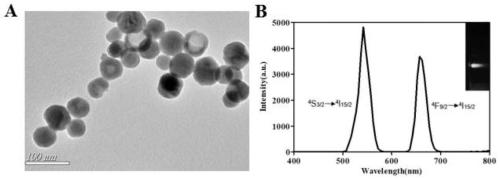CRISPR/Cas13a based food-borne pathogenic bacterium nucleic acid nano fluorescence trace detection method
A food-borne pathogenic bacteria, nucleic acid nanotechnology, applied in biochemical equipment and methods, microbial determination/inspection, etc. Accurate amplification and fast detection
- Summary
- Abstract
- Description
- Claims
- Application Information
AI Technical Summary
Problems solved by technology
Method used
Image
Examples
Embodiment Construction
[0020] In order to make the object, technical solution and advantages of the present invention more clear, the present invention will be further described in detail below in conjunction with the accompanying drawings and embodiments. It should be understood that the specific embodiments described here are only used to explain the present invention, not to limit the present invention.
[0021] Such as figure 1 , the method proposed by the present invention based on the CRISPR / Cas13a nucleic acid nano-fluorescent trace detection method of food-borne pathogens, to further verify the detection method proposed by the present invention, the scheme designed by the present invention is suitable for the detection of food-borne pathogens , in the present embodiment only Staphylococcus aureus (S.aureus) is example, and concrete operation process is as follows:
[0022] Preparation of nucleic acid target fragments of Staphylococcus aureus: first inoculate Staphylococcus aureus on Luria-B...
PUM
 Login to View More
Login to View More Abstract
Description
Claims
Application Information
 Login to View More
Login to View More - R&D
- Intellectual Property
- Life Sciences
- Materials
- Tech Scout
- Unparalleled Data Quality
- Higher Quality Content
- 60% Fewer Hallucinations
Browse by: Latest US Patents, China's latest patents, Technical Efficacy Thesaurus, Application Domain, Technology Topic, Popular Technical Reports.
© 2025 PatSnap. All rights reserved.Legal|Privacy policy|Modern Slavery Act Transparency Statement|Sitemap|About US| Contact US: help@patsnap.com


